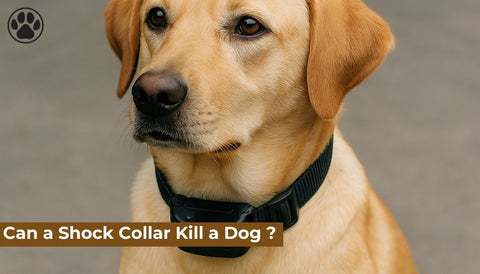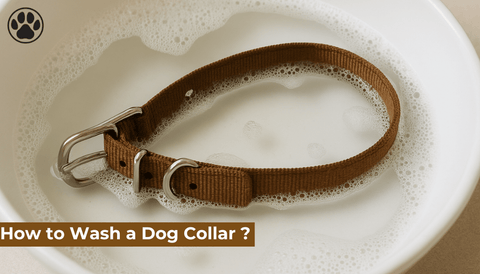
Can Dogs Catch Lice ?
of reading - words
Pet owners are often concerned about parasites like fleas and ticks, but fewer realize that dogs can catch lice too. While less common, dog lice can cause discomfort, skin irritation, and even lead to secondary infections if not treated promptly.
In this article, we’ll explore everything you need to know about canine lice—from how dogs get them, to symptoms, treatment, and prevention. Understanding this pest will help you keep your furry companion happy, healthy, and itch-free.
What Are Dog Lice?
Dog lice are small, wingless insects that live on a dog’s skin and feed on their blood or skin debris. Unlike fleas, lice don’t jump or fly—they crawl from one dog to another through direct contact or shared items like brushes, bedding, or collars.
There are two main types of lice that affect dogs:
-
Chewing lice (Trichodectes canis): Feed on skin debris and can cause itching and hair loss.
-
Sucking lice (Linognathus setosus): Feed on blood and can lead to anemia in severe cases.
It’s important to note that lice are species-specific, meaning dog lice cannot be transmitted to humans or cats, and vice versa.
Can Dogs Catch Lice from Other Animals or People?
No. Dogs can only catch lice from other dogs. This happens through:
-
Direct contact with an infested dog (e.g., at dog parks, kennels, or groomers)
-
Sharing contaminated grooming tools, bedding, or toys
Because lice cannot jump or fly, transmission requires close and prolonged contact.
Humans and cats cannot catch lice from dogs, and human lice do not infest dogs. That means if your child brings lice home from school, your dog is not at risk—and neither are you from your dog.
Signs and Symptoms of Lice in Dogs
Knowing the symptoms can help you catch a lice infestation early. Common signs include:
-
Frequent scratching or biting at the skin
-
Dry, scaly, or irritated skin
-
Hair loss or patchy coat
-
Visible tiny insects or white eggs (nits) attached to hair shafts
-
Restlessness or discomfort
-
Anemia in severe infestations, especially in puppies or small dogs
Lice are most often found around the ears, neck, shoulders, and groin area. Use a fine-toothed comb and inspect the fur closely to detect nits or live lice.
How to Treat Lice on Dogs
If you suspect lice, consult your veterinarian for proper diagnosis and treatment. Your vet may recommend:
1. Topical Treatments
Medications such as selamectin, fipronil, or imidacloprid are commonly used to kill lice. These are usually applied monthly and also protect against other parasites.
2. Medicated Shampoos
Insecticidal shampoos containing pyrethrin or permethrin can kill lice on contact. Follow the instructions carefully and repeat as advised.
3. Oral Medications
In some cases, oral flea and tick treatments may help manage lice infestations, although they’re not always the first line of treatment.
4. Environmental Cleaning
Wash your dog’s bedding, toys, and grooming tools in hot water. Disinfect any areas your dog frequents, such as crates or furniture.
5. Treat Other Pets
Even if other dogs in the household are not showing symptoms, they may still carry lice. Treat them as a precaution if your vet recommends it.
Treatment typically lasts 2–4 weeks, with follow-up to ensure all lice and eggs are eliminated.
Can Lice Cause Serious Health Issues in Dogs?
Generally, lice are more of a nuisance than a life-threatening issue. However, in neglected or vulnerable dogs—such as puppies, seniors, or those with weakened immune systems—lice can cause:
-
Severe skin irritation
-
Secondary bacterial infections
-
Anemia, due to blood loss from sucking lice
That’s why prompt detection and treatment are essential to avoid complications.
How to Prevent Lice in Dogs
While lice are not as common as fleas or ticks, prevention is still important. Here’s how to reduce your dog’s risk:
-
Avoid contact with stray or infested dogs
-
Use monthly parasite preventatives (consult your vet for the right one)
-
Disinfect grooming tools and wash bedding regularly
-
Inspect your dog’s coat regularly, especially after visits to groomers or dog parks
-
Practice good hygiene and grooming routines
If your dog frequently interacts with other dogs, regular checkups and a consistent preventive care plan can go a long way in avoiding infestations.
FAQ
Can dogs catch lice from humans?
No. Dog lice are species-specific and cannot be transmitted to or from humans.
Are lice common in dogs?
Lice are less common than fleas or ticks but can occur, especially in dogs that are neglected or have poor hygiene.
How long does it take to get rid of lice in dogs?
With proper treatment, most lice infestations clear up in 2–4 weeks. Follow-up treatments are essential to kill eggs and prevent reinfestation.
Can puppies get lice?
Yes, puppies are especially vulnerable due to their weaker immune systems and close contact with littermates.
Do over-the-counter flea treatments work for lice?
Some OTC flea treatments also kill lice, but not all are effective. Always check the label and consult your vet before use.
Final Thoughts
So, can dogs catch lice? Yes—but the good news is that canine lice are treatable, preventable, and specific to dogs. By staying vigilant, practicing good hygiene, and using proper parasite control, you can protect your dog from discomfort and ensure their coat stays healthy and clean.
If you notice any signs of lice or unusual itching, don’t wait. Contact your vet and start treatment right away. Your dog will thank you for it.




